Photographer Rahi Rezvani made this series with Hendrik Dierendonck in 2018 for Food Inspiration. The pig in the photos however is not a Menapii pig, but a modern breed. The Menapii pig is recognizable by its long and stiff dark hairs.
Rahi Rezvani Frank Lindner Sander van der Meij
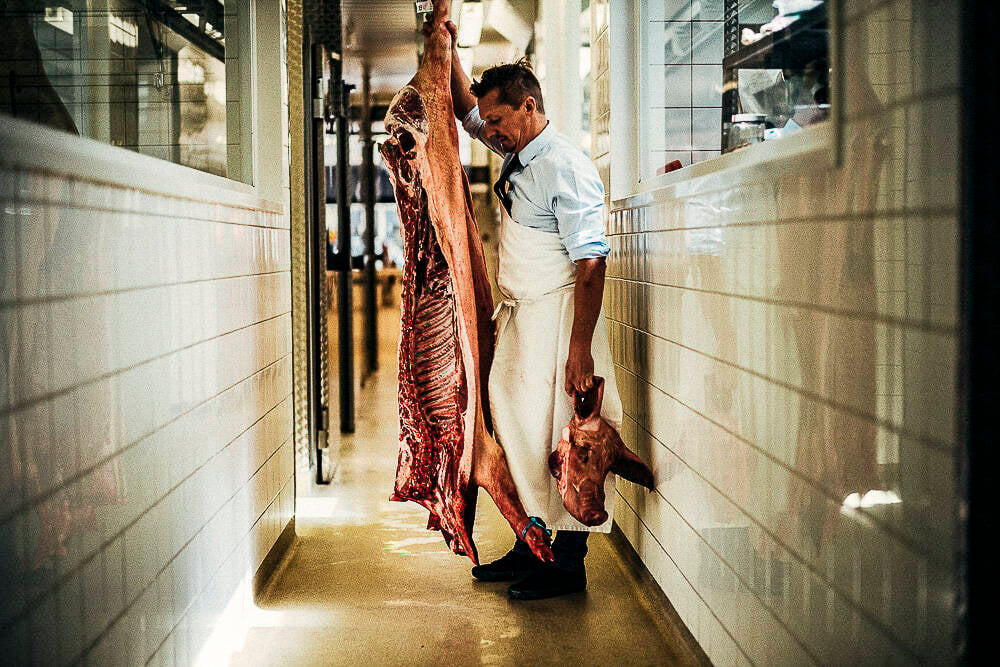
Next step: an in-house drying installation
Dierendonck and the scientists managed to extract Menapii pig DNA from clay strata and bone fragments. After a lot of cross-breeding and experimentation, the Menapii pig has been resurrected. The next step is to build an in-house meat drying facility at his current farm. The pork meat can then ripen under the influence of a constant sea breeze.
High-fat and firm
Menapii pork meat distinguishes itself with a powerful, rounded flavour, high fat percentage and firm structure. They are free range pigs which, combined with the unique diet of lentils and old grain varieties, gives the meat its rich complexity. The pure flavours of a pork chop, manchetta, sausage or pork roast with hay are an ode to our Burgundian tradition.
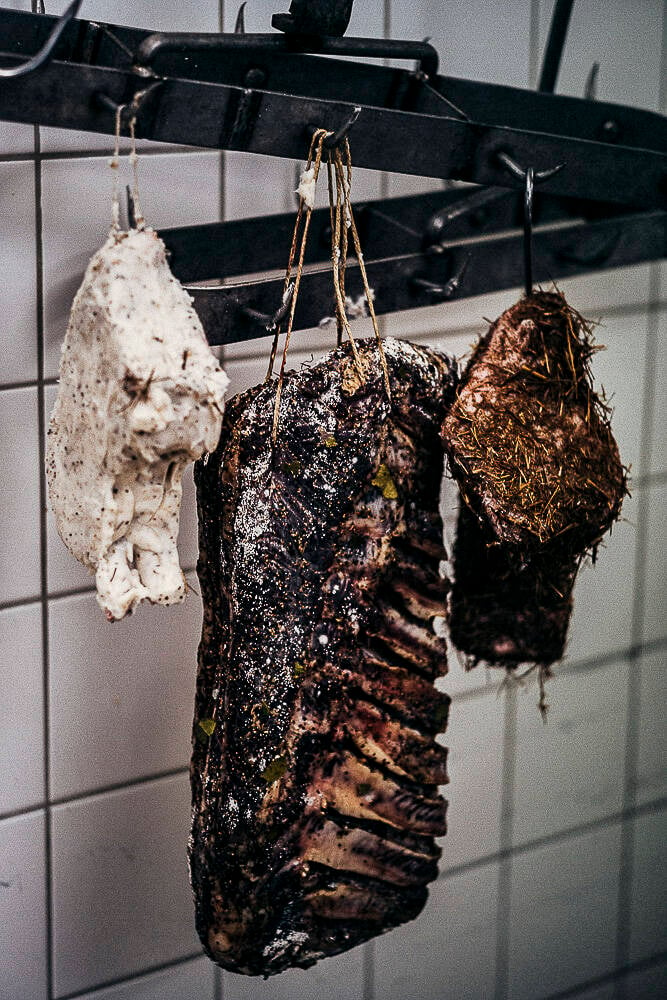
gone extinct while expensive ham
is being imported from Italy.
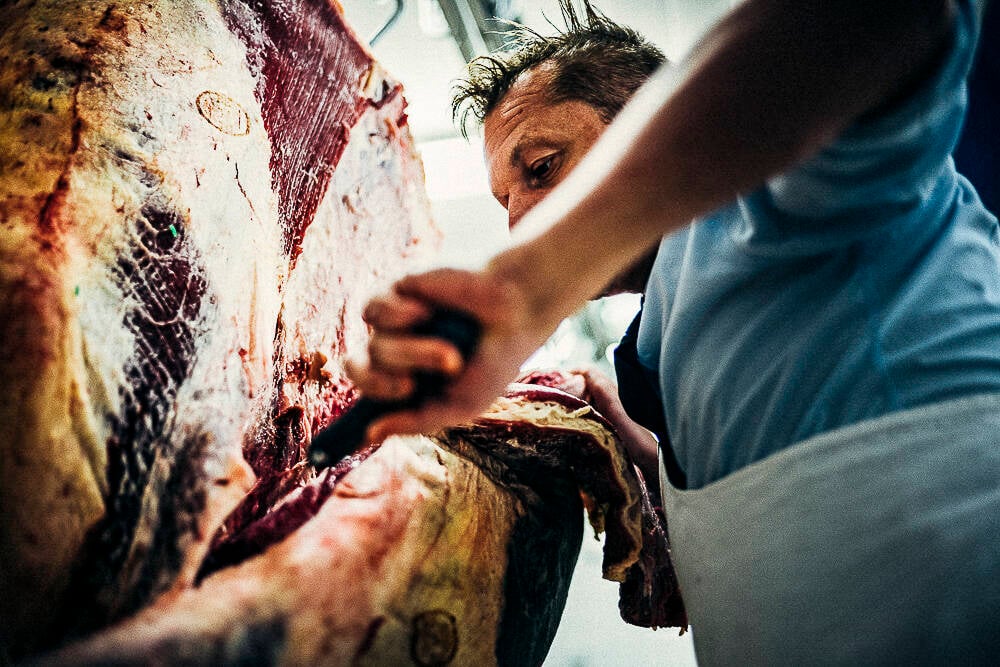
Successful export product
The Menapii pig was bred during the Celtic-Roman era by people who then lived between the Flemish coast and the Schelde river. These pigs were a wild, stubborn yet high-fat delicacy that was richly paid for in Rome during the first century AD. This made the Flemish Menapii pig one of the first successful Belgian export products, that took Roman legionaries six months to transport to Rome. Dierendonck saw irony in the fact that the Belgian pig had gone extinct while Belgians and Europeans were now paying top dollar to import Parma ham from Italy.

is back after two thousand years of absence

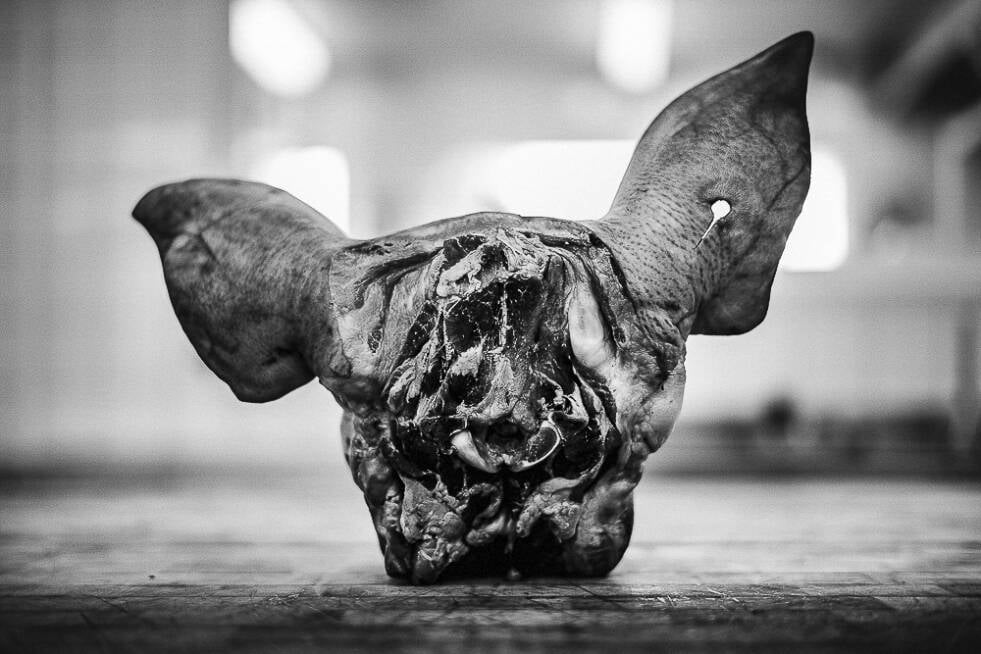
Belgian butcher Hendrik Dierendonck managed to revive an extinct Roman pig breed in collaboration with Ghent University. The Menapii pig is back.
Jurassic Pork
REPORTAGE
3 min
REVIVING AN EXTINCT ROMAN PIG BREED
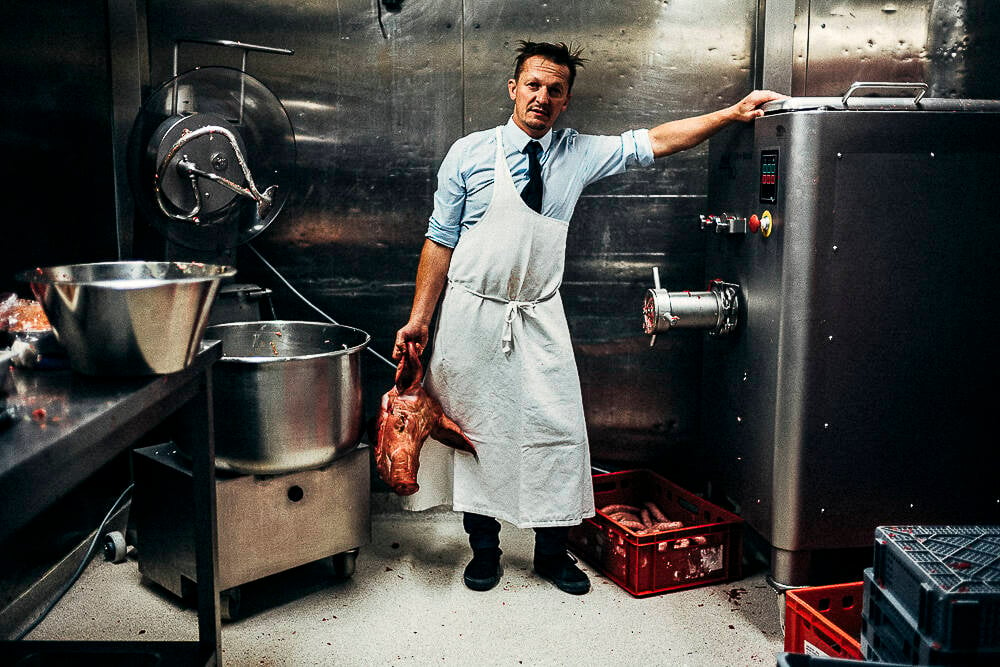
Photographer Rahi Rezvani made this series with Hendrik Dierendonck in 2018 for Food Inspiration. The pig in the photos however is not a Menapii pig, but a modern breed. The Menapii pig is recognizable by its long and stiff dark hairs.
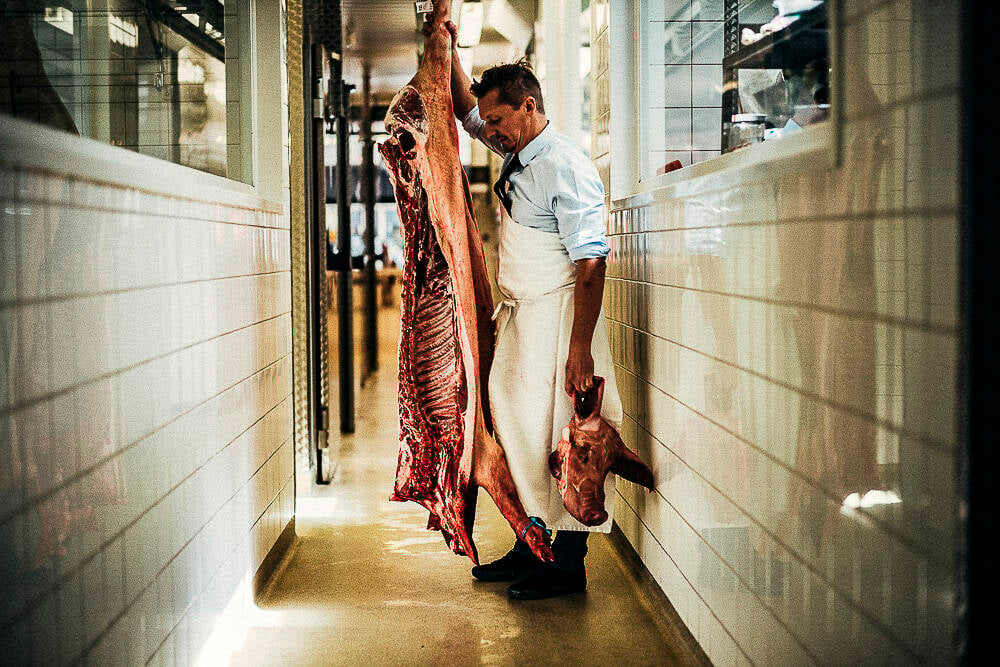
Dierendonck and the scientists managed to extract Menapii pig DNA from clay strata and bone fragments. After a lot of cross-breeding and experimentation, the Menapii pig has been resurrected. The next step is to build an in-house meat drying facility at his current farm. The pork meat can then ripen under the influence of a constant sea breeze.
Next step: an in-house drying installation
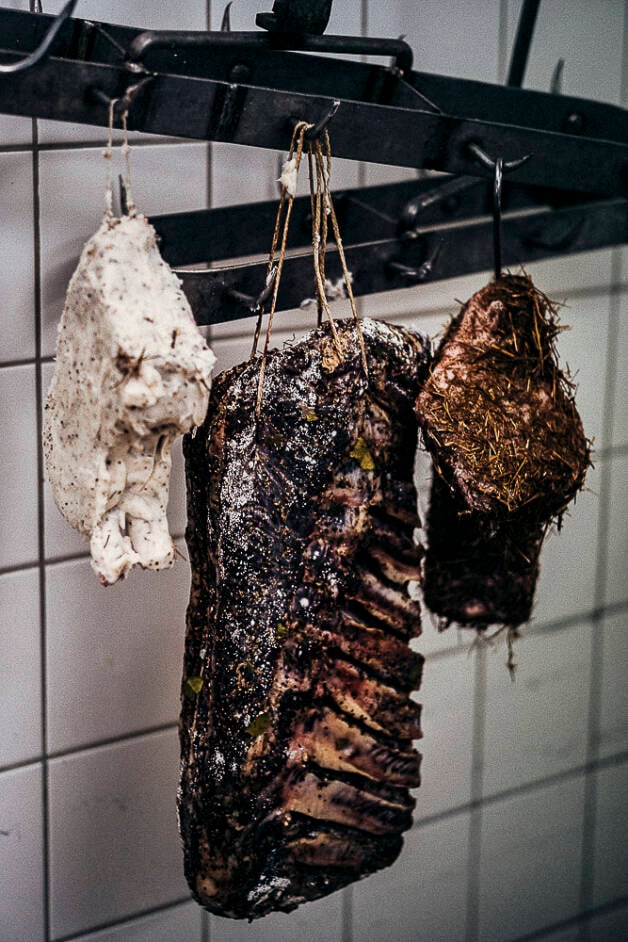
Menapii pork meat distinguishes itself with a powerful, rounded flavour, high fat percentage and firm structure. They are free range pigs which, combined with the unique diet of lentils and old grain varieties, gives the meat its rich complexity. The pure flavours of a pork chop, manchetta, sausage or pork roast with hay are an ode to our Burgundian tradition.
High-fat and firm
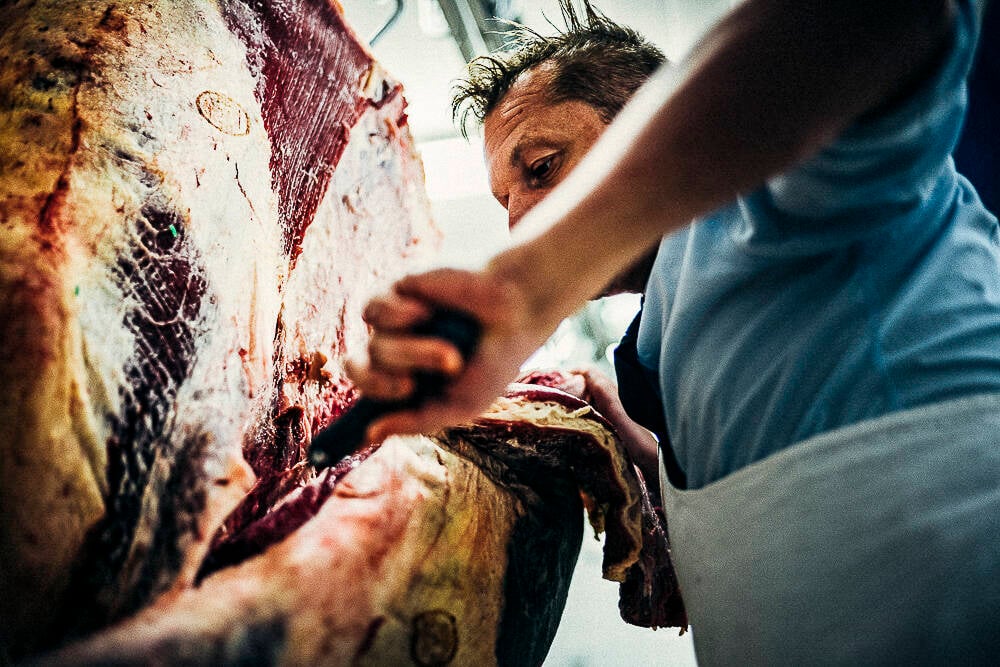
gone extinct while expensive ham
is being imported from Italy.
is back after two thousand years of absence
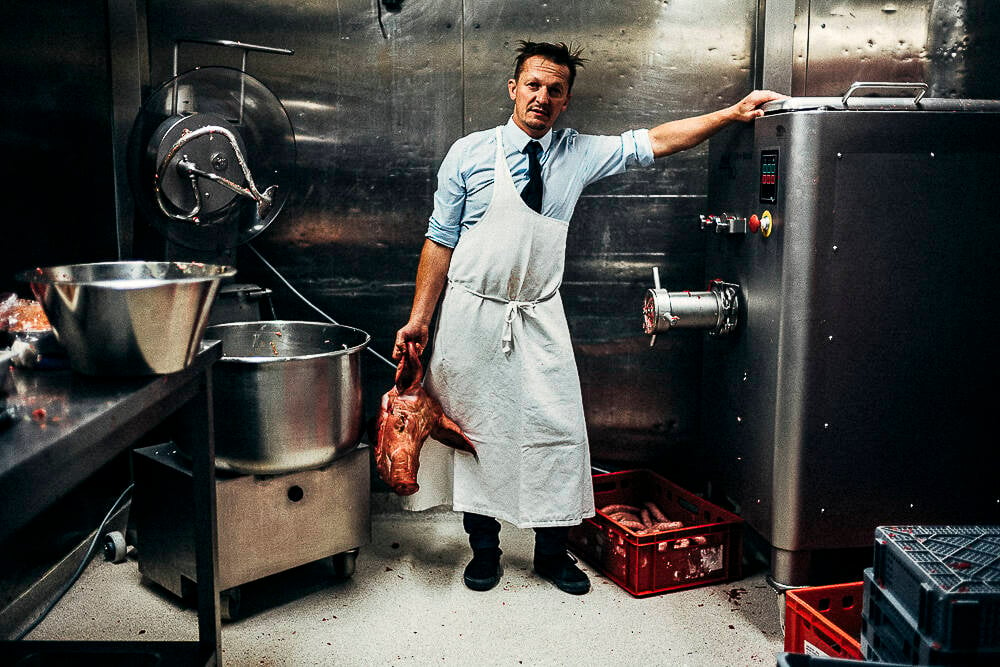
The Menapii pig was bred during the Celtic-Roman era by people who then lived between the Flemish coast and the Schelde river. These pigs were a wild, stubborn yet high-fat delicacy that was richly paid for in Rome during the first century AD. This made the Flemish Menapii pig one of the first successful Belgian export products, that took Roman legionaries six months to transport to Rome. Dierendonck saw irony in the fact that the Belgian pig had gone extinct while Belgians and Europeans were now paying top dollar to import Parma ham from Italy.
Successful export product
Hendrik Dierendonck is known in Belgium and Europe for his West-Flanders red cows. He succeeded in saving this “forgotten” cow breed from extinction. But cows are no longer Dierendonck’s only speciality. Together with Ghent University and Belgian pig breeder Ruben Brabant, Dierendonck successfully reintroduced the extinct Belgian Menapii pig after two thousand years of absence.
The rise of an old breed
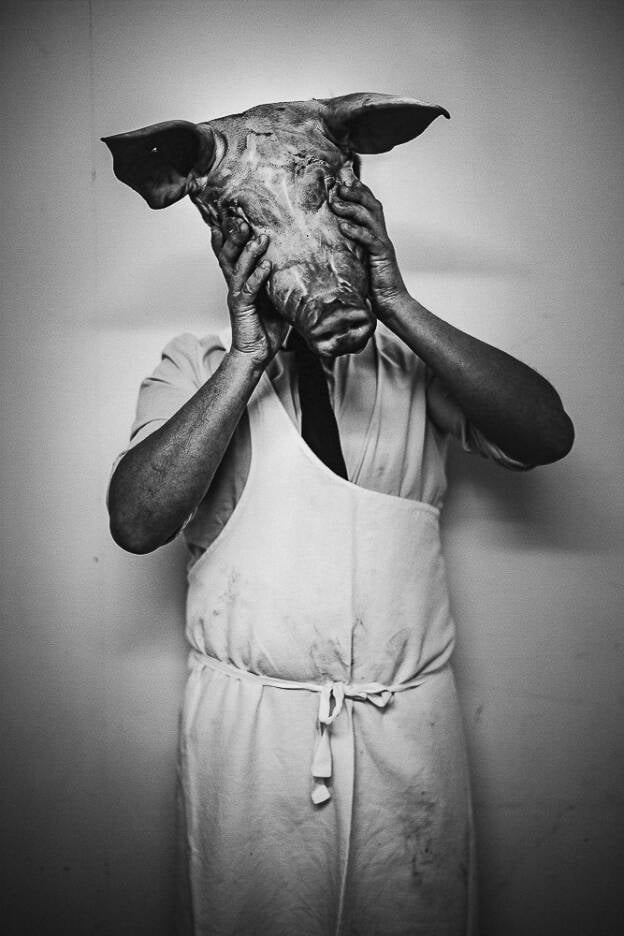
Belgian butcher Hendrik Dierendonck managed to revive an extinct Roman pig breed in collaboration with Ghent University. The Menapii pig is back.
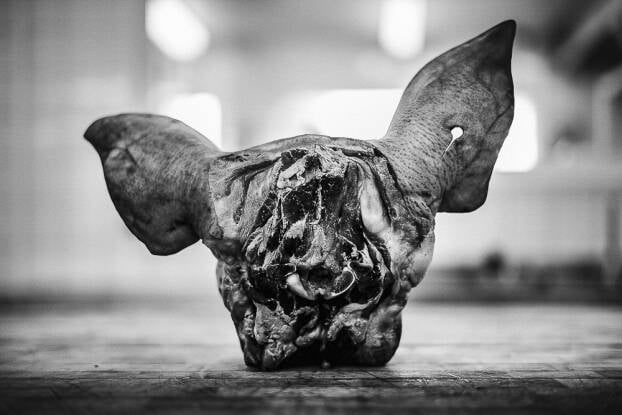
Jurassic Pork
3 min









